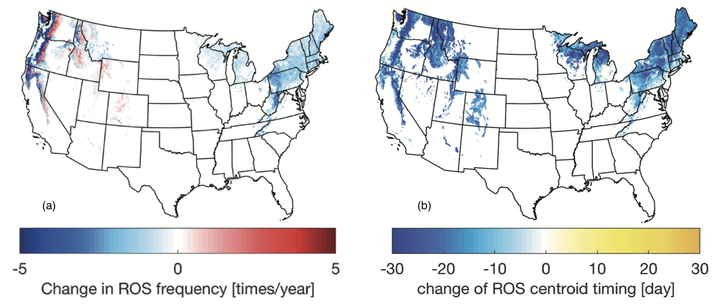
Abstract
Based on a process‐level modeling of the rain‐on‐snow (ROS) events in the period of 1950 to 2013 and in a warmer climate, we quantify the historical and future runoff contribution from ROS to extreme floods and the source of runoff and snowmelt in large ROS events within the conterminous United States (CONUS). We find that the regions impacted most heavily by ROS include the West Coast, the major mountain ranges of the western interior, the Upper Midwest, the Northeast, and the lower Appalachians. While 70% of extreme (upper 0.1%) runoff events in these regions have some contribution from ROS, the runoff generated during these ROS events accounts for less than 10% of the total extreme flood runoff; the much larger fraction of extreme runoff is from either intense rainfall or clear‐sky snowmelt. Rainfall is the dominant source of runoff in ROS events along the West Coast and over the west‐facing slopes of the Cascades and Sierra Nevada, while snowmelt dominates ROS runoff in the other regions in the CONUS. Net radiation dominates the snowmelt during ROS in the high mountains in the West, while net radiation and turbulent heat flux are equally dominant in the rest of CONUS. Historically, the role of ROS in streamflow extremes is most significant in midelevation areas, but this “significant influence zone” will shift to higher elevations in a warmer future. The future ROS frequency changes exert a first order control on the future change of the runoff contribution from ROS to extreme floods.